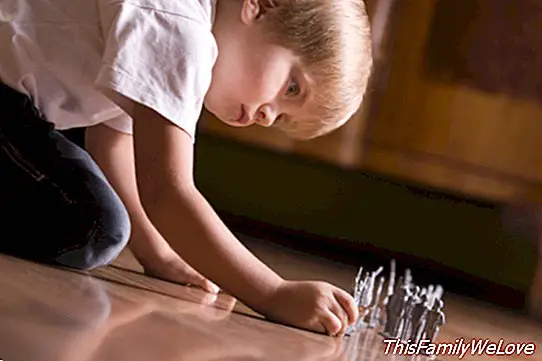Doubts and answers about obsessive-compulsive disorder in children
Obsessive ideas and compulsive behaviors produced with frequency and intensity and that interfere with the normal life of the child. This defines the Obsessive Compulsive Disorder (OCD), an ailment by which people who suffer from it can not stop obsessing with thoughts or images in their minds and that causes them to normally have repetitive behaviors.
"The frequency with which obsessive compulsive disorder appears in childhood is one percent", point out from the Spanish Society of Child Psychiatry, which warn that even so the families that consult professionals on this subject "are much less", something that is explained because the family often confuses these behaviors with children's games.
Due to these confusions and the shame to tell it that usually happens in cases where the TOC, we answer some habitual questions about obsessive compulsive disorders in children with the help of the information provided by the Spanish Association of Pediatrics in Primary Care (Aeped).
The diagnosis of OCD
The International Classification of Diseases is the one that serves the mental health professionals of children for the diagnosis of children. According to this classification, for children to be diagnosed with OCD, they must meet these two concepts:
- Obsessive ideas or compulsions (or both) should be present during most days, during a period of at least two weeks. This indicates that the symptoms must be stable over time.
-The obsessions or compulsions produce significant discomfort in the childIt suffers from them, or they interfere significantly in their daily activities due to the time they consume.
"Also, obsessions and compulsions they should not be the result of the symptoms of other mental disorders as schizophrenia or affective disorders, "clarifies the Society of Child Psychiatry.
The obsessions
We have all had an idea that has hovered over our heads for a long time, almost looking like an obsession, but it was not. Obsessive thoughts are those ideas, thoughts, images or impulses "that burst again and again in the mind in a repetitive way", the experts point out.
These are thoughts that are not simple concerns, but rather They are annoying and generate anxiety for the child, that tries, without success, to resist them. In addition, there are certain issues that are more "typical" in the obsessions, something that varies according to age. In particular, in childhood the most common obsessions are:
-Dirt. Thoughts of getting dirty and infected if they touch a surface or an object. For example, if they touch the floor or a table with food.
- Afraid of being damaged and death. A frequent example is the idea that parents can die when the child is left alone at home.
-Symmetry. Thoughts about the need for all objects to be placed symmetrically and in order.

The compulsions
After the obsessions compulsions arrive: the child's behavior in response to that thought repeated in his mind. "Compulsive or ritual acts are repetitive behaviors that are performed over and over again", define these experts in child psychiatry, that they add that they are acts that by themselves "are not pleasant, nor do they lead to completing useful tasks in and of themselves". The most common compulsions are:
- Washed. It occurs after the obsession of dirt. Sometimes this washing (of hands, or of the whole body) can lead to the fall of the skin and to produce important erosions because it is repeated again and again.
-Repeat and check. It occurs after any type of obsession. For example, after an obsessive thought about the death of a brother who sleeps in the next room, the repetition compulsion is to go to his room again and again to make sure he is well.
How to distinguish it?
As we have said, many times parents do not go to experts when they see these behaviors in children because they think they are games... how to distinguish them and at the same time not obsess every time we see our child with repetitive behaviors?
There are many games that exist and that have a "obsessive or compulsive component ". Surely it sounds to you that you do not step on the tiles of a certain color, count the cars, etc; some games that can become very repetitive. "The difference with the symptoms of obsessive-compulsive disorder is that both the game itself and the interruption do not produce anxiety or distress." That is to sayIf stopping playing generates anxiety in your child, you should consider taking him to an expert to evaluate him.
The treatment of OCD
Being a disorder related to the mind, the treatment It will depend on the characteristics of the child and the nature and severity of the symptoms it presents. In general, there are two types of therapies that are more common and successful: cognitive-behavioral and treatment with antidepressant medications, although there are other therapies.
Angela R. Bonachera




